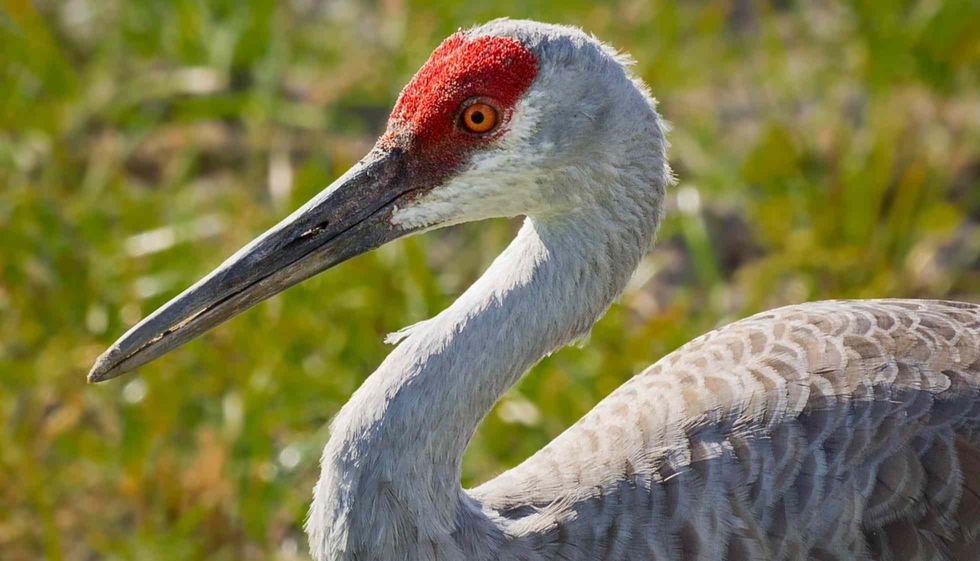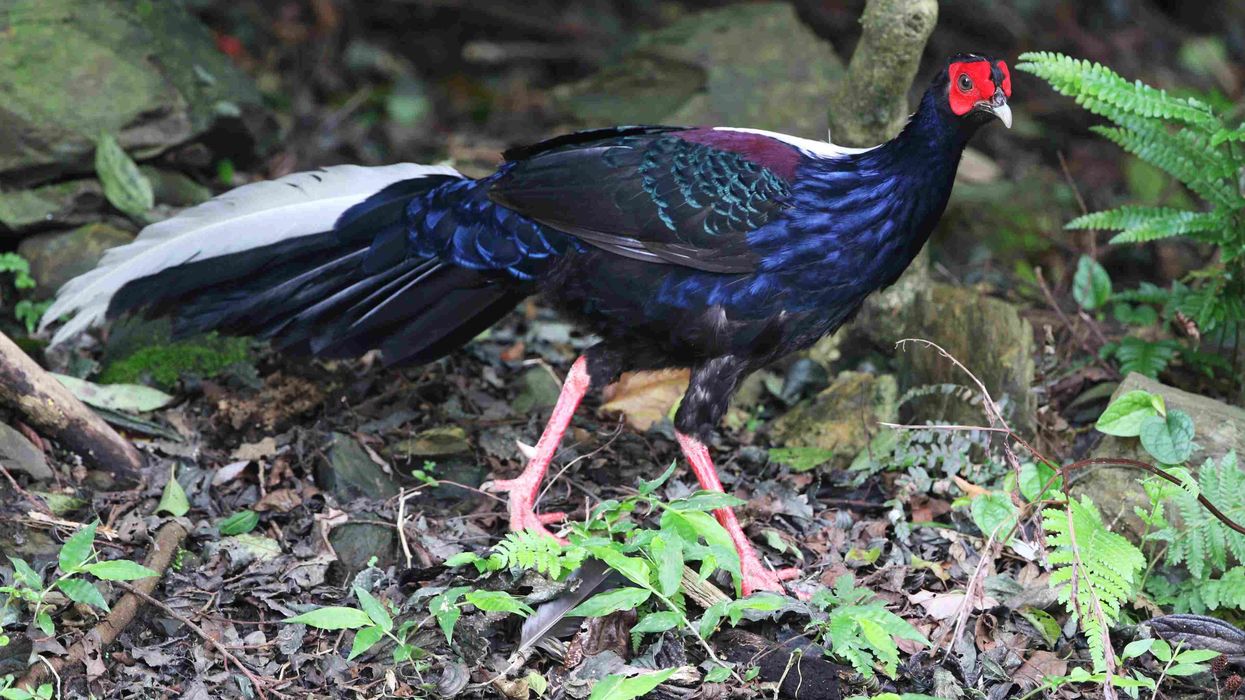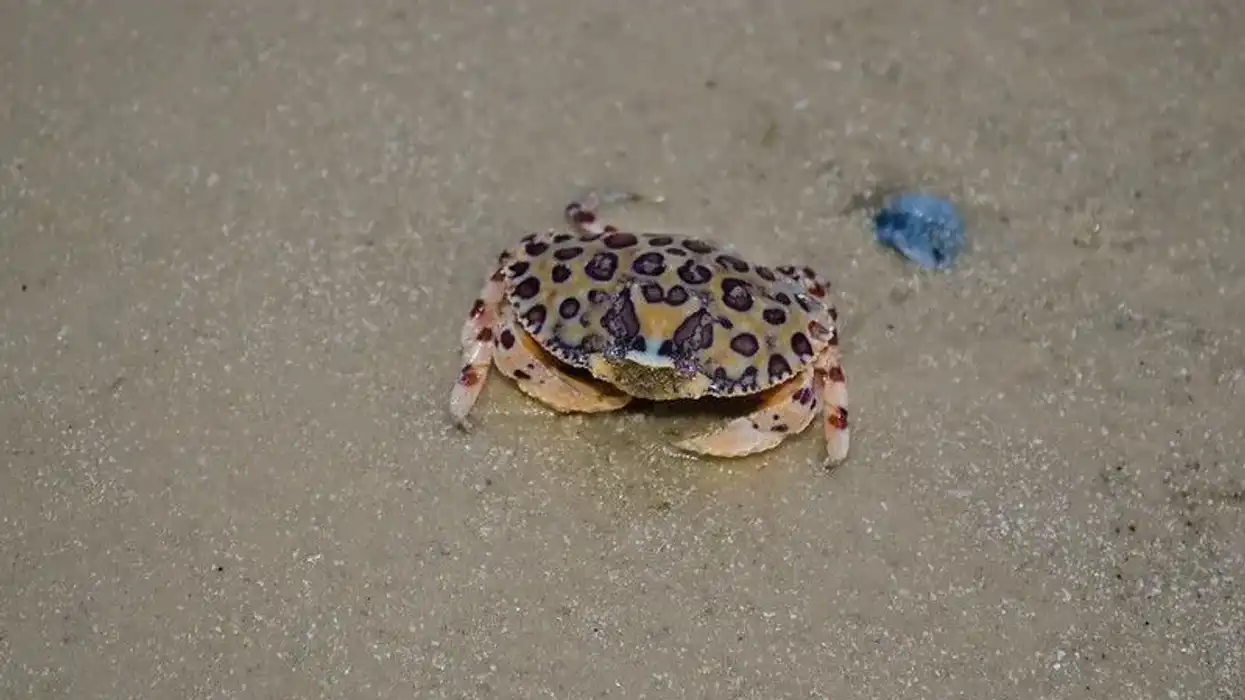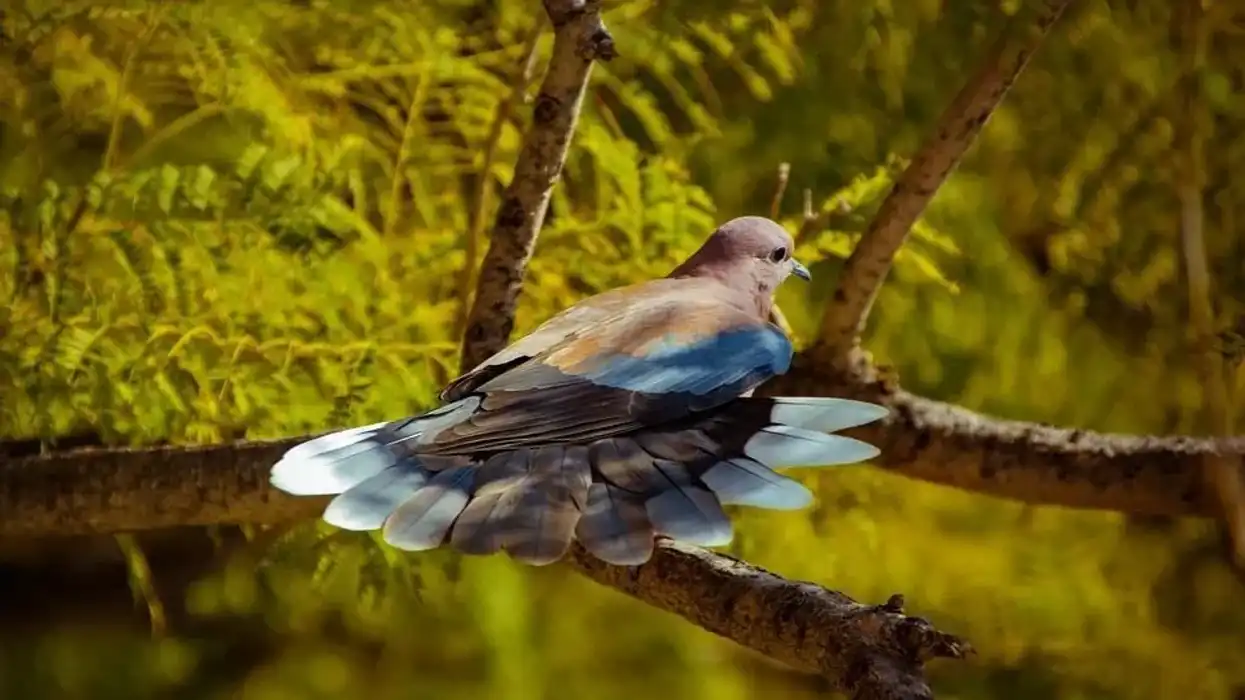Sandhill crane (Antigone Canadensis) are large cranes inhabiting North America and northeastern Siberia. In North America, Sandhill cranes have six subspecies. The migratory cranes are greater Sandhill cranes, lesser Sandhill cranes, and the Canadian sandhill cranes. The Florida sandhill cranes, Mississippi sandhill cranes, and Cuban sandhill cranes are non-migratory birds.
Each of the sandhill crane subspecies usually nests in the open, wet grassland habitats within their range. These North American cranes are opportunistic feeders. Though most of their diet includes plant matters and grains, they will also eat small reptiles, invertebrates, amphibians, and even mammals.
Sandhill cranes are large birds with a heavy body, a long neck, and long, thin legs. Male and female cranes look similar, except that the males are larger than the females.
In the last twenty years, sandhill migratory cranes’ nesting range has expanded. The migration towards Florida have increased during the winter months. However, most Sandhill crane populations are facing threats due to habitat loss. Degradation of marshes and drainage of wetlands are having serious impacts on this avian wildlife. The Mississippi and Cuba and hill cranes are endangered species.
A sandhill crane fossil unearthed in Florida suggests the existence of these birds even 2.5 million years ago.
For more relatable content, check out these crane facts and red-crowned crane facts for kids.
Sandhill Crane Interesting Facts
What type of animal is a sandhill crane?
Sandhill cranes are birds. The species living in Canada and the northern USA are migratory and the others like the Florida sandhill crane are non-migratory and spend the winter in their range.
Sandhill crane birds are tall and strong with a long bill. A greater sandhill crane height can be up to five feet.
What class of animal does a sandhill crane belong to?
Sandhill cranes belong to the class Aves, meaning they are birds. These large birds are found in several scattered ranges of North America. Some sandhill crane seasonal migration happens before the severe winters in Canada and northern parts of their range.
In early spring, sandhill crane gather in large numbers on the Platte River in Nebraska. This sandhill crane migration congregation along the Platte River can be considered one of the most amazing wildlife spectacles.
More than twenty-five thousand or more sandhill crane populations can be seen together at a time. This is a time when one can hear various Sandhill crane sounds around the Platte River.
The largest winter migratory gatherings are seen on the Great Plains when these birds gather at stopover points.
How many sandhill cranes are there in the world?
Sandhill crane populations are considered abundant with estimated 650,000 living birds, out of which the most plentiful species' - the lesser sandhill crane - population is approximately 450,000 - 500,000.
Where does a sandhill crane live?
Wetlands are the primary habitats of sandhill cranes. Sandhill crane nests are usually located in small and isolated marshes, bogs, and similar wetland environments near rivers and lakes. These birds prefer to have nests in wetlands with vegetation growing in standing water. However, some Sandhill crane species also make their nests on the dry ground in their breeding range.
Sandhill crane populations nesting in Mississippi, Florida, and Cuba remain within their range during the winter season.
What is a sandhill crane's habitat?
All sandhill crane subspecies have similar kinds of habitats and nesting grounds in wetland environments.
Among the six North American sandhill cranes, the Mississippi subspecies is found only on Mississippi’s southeastern coast. The Florida sandhill cranes mainly inhabit the inland wetlands of Florida. The Cuban sandhill cranes live typically live in wetlands, savannas, and grasslands within their Cuban range. These subspecies remain permanently in their home range.
The migratory lesser, greater, and Canadian sandhill cranes travel two to three hundred miles on a flight during winter migration season. They may even travel up to five hundred miles if the wind is favorable. During the winter months, you can see these cranes resting and feeding along wetland habitats and rivers in the Great Plains and Pacific Northwest.
These three subspecies spend winter seasons in the south in Texas, Mexico, Arizona, and California, and the warmer summers in their nesting and breeding grounds. After winter, they begin their migration flight in early spring back to their breeding grounds which is a wildlife spectacle.
Who do sandhill cranes live with?
Sandhill cranes live in flocks except for the breeding season.
During the breeding season, these cranes sleep close to their nests to protect their eggs and chicks.
Young birds remain with their parents for 9-10 months and accompany them in migration.
Sandhill cranes roost in flocks during the non-breeding season. It provides the birds with safety. Most of the species roost in their traditional roosting sites.
How long does a sandhill crane live?
Sandhill cranes can live up to twenty years in the wild.
How do they reproduce?
Sandhill cranes are monogamous and mate for life until one crane dies.
The breeding season begins with dancing displays by the males, which involve bowing, flapping of wings, and jumping.
The pairs make nests out of plant materials in their breeding grounds. Usually, a female crane lays two eggs. Sandhill crane eggs are generally laid in April–May and the sandhill crane chicks hatch in thirty-two days. Both parents take turns to look after Sandhill crane chicks.
What is their conservation status?
The sandhill crane endangered subspecies in the USA are the Mississippi and the Cuban sandhill cranes. The conservation status of the other four sandhill crane subspecies is of the least concern.
Sandhill cranes face threats like habitat loss, wetland loss, urban development, wetland destruction, and overhunting.
The greater, lesser, and Canadian sandhill cranes are listed as endangered by the Washington Department of Fish and Wildlife in the state.
Sandhill Crane Fun Facts
What do sandhill cranes look like?

Sandhill cranes are large birds. All the subspecies have long, thin legs and long, elegant necks. Their cheeks are white and the forehead has a red patch.
Most sandhill cranes have gray feathers that vary in shade. Some birds have a reddish-brown appearance. This happens mostly due to their habit of rubbing iron-rich mud on the body while preening.
Young birds have gray and rusty brown plumage. The pale cheek and the red crown are missing in the young sandhill cranes.
How cute are they?
Sandhill cranes are wildlife living in particular habitats and are not cuddly.
How do they communicate?
Sandhill crane call is a loud rattling kar-r-r-r-o-o-o. This avian wildlife has different calls for couple calls, flock flying, rattle call, flight call.
Sandhill crane parents communicate with their young with mostly physical displays.
How big is a sandhill crane?
Compared to an ostrich that can weigh up to 320 lb (145 kg), a sandhill crane of about 11 lb (5 kg) is almost 29 times lighter.
How fast can a sandhill crane run?
The flight speed of sandhill cranes is 25-35 mph (40.23-56.32 kph) . The running speed is not known.
How much does a sandhill crane weigh?
The average weight of a Greater sandhill crane is 10 - 14 lb (4.5-6.3 kg).
What are the male and female names of the species?
A male sandhill crane is sometimes referred to as a ‘roan’ due to its coloration and the female as a ‘mare’.
What would you call a baby sandhill crane?
A baby sandhill crane is called a colt.
What do they eat?
Sandhill cranes are omnivorous. Their diet varies depending on the location and availability of food. The diet of these birds mostly includes grains and plant matters, but they also eat insects, worms, rodents, lizards, nesting birds.
Are they dangerous?
Sandhill cranes are not dangerous, but sandhill cranes attack occasionally if approached at a close distance.
Would they make a good pet?
No, sandhill cranes are wildlife and do not make good pets.
Did you know...
Predators of sandhill cranes include birds of prey like eagles, foxes, and wildcats.
The oldest sandhill crane lived for more than 36 years.
What does it mean when you see a sandhill crane?
Seeing a pair of cranes represent good luck and true love.
Native Americans worshiped cranes and considered them symbols of wisdom, long life, and immortality. They were also a symbol of independence.
What does sandhill crane taste like?
Sandhill crane meat is edible and that’s why sometimes they are overhunted. In several US states, conservation efforts include regulated sandhill crane hunting.
Sandhill crane meat is called the "rib eye of the sky" due to its beef-like similarities.
Here at Kidadl, we have carefully created lots of interesting family-friendly animal facts for everyone to discover! For more relatable content, check out these Siberian crane facts and sarus crane facts pages.
You can even occupy yourself at home by coloring in one of our sandhill crane coloring pages.









